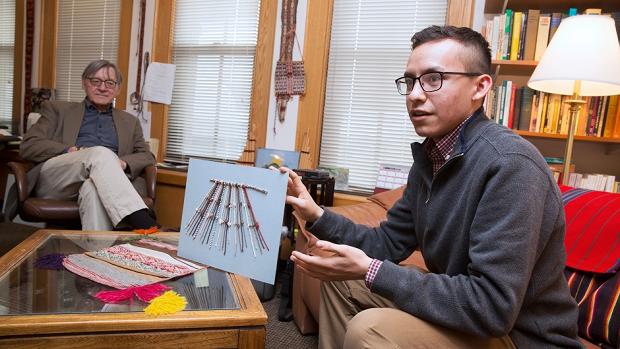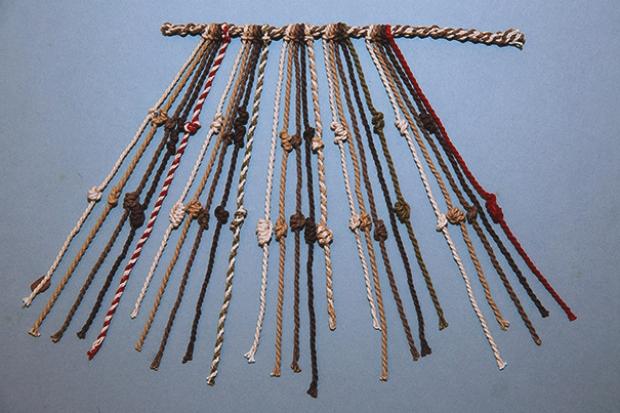 |
Canku Ota
|
 |
|
(Many Paths)
|
||
|
An Online Newsletter
Celebrating Native America
|
||
|
January 2018 - Volume
16 Number 1
|
||
|
|
||
|
Harvard Undergrad
Cracks Code Of Knotted Inca Rope Used As 'An Ancient Excel Spreadsheet'
|
||
|
by CBC Radio - As It
Happens
|
||
Instead of partying during his spring break, Harvard undergrad Manny Medrano stayed on campus and deciphered the meaning of an ancient Inca khipu. Khipus are knotted string devices used by the Inca people to record information like censuses and tax records. "For about a hundred years, researchers have understood that many of these artifacts — there's about 1,000 of these khipus still in existence today — encoded mathematical data," Medrano, 21, told As It Happens guest host Helen Mann. "Kind of like an ancient Excel spreadsheet." But Medrano discovered that the ropes may, in fact, contain far more than just numbers. Their complex colour system, he said, appears also to represent more complex narrative information like names, geography and history. His findings will be published in the January edition of the journal Ethnohistory. 'A Rosetta khipu, if you will' It all started when the mathematics major took an archeology class with Gary Urton, chair of the Harvard's anthropology department and an expert in pre-Columbian studies. Urton told the class about a recent discovery of six khipus that appeared to match up with information collected in a written Spanish census of 132 Indigenous villagers in a coastal Peruvian valley.
By comparing the khipus to the document, Urton hoped to unravel more of the meaning behind the knotted ropes. "What we've been looking for in those roughly hundred years of research has been to try to find a match — a Rosetta khipu, if you will — between a Spanish document and a set of these knotted artifacts," Medrano said. Eureka moment Medrano volunteered to help with the research over his spring break. Then one day, alone in his dorm room, he had his Eureka moment. Not only did the knots line up with the numbers in the written census — but the colours appeared to represent the names of the villagers. "The matching game that was happening here was to try to count and grasp how many Felipes there are, how many Joses, and then to see if there's a match between that and some form of the construction of these khipus."
|
||||
|
|
|
|
||
|
|
||
| Canku Ota is a free Newsletter celebrating Native America, its traditions and accomplishments . We do not provide subscriber or visitor names to anyone. Some articles presented in Canku Ota may contain copyright material. We have received appropriate permissions for republishing any articles. Material appearing here is distributed without profit or monetary gain to those who have expressed an interest. This is in accordance with Title 17 U.S.C. Section 107. | ||
|
Canku Ota is a copyright ©
2000 - 2018 of Vicki Williams Barry and Paul Barry.
|
||
 |
 |
|
|
The "Canku
Ota - A Newsletter Celebrating Native America" web site and
its design is the
|
||
|
Copyright ©
1999 - 2018 of Paul C. Barry.
|
||
|
All Rights Reserved.
|
||

